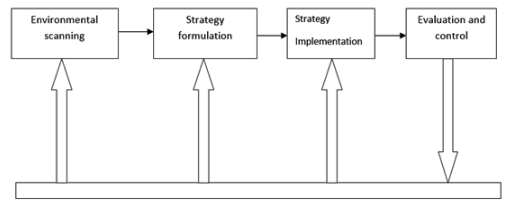Management of Strategic Change | Management Optional Notes for UPSC PDF Download
| Table of contents |

|
| Introduction |

|
| Types of strategic change |

|
| Barriers to Strategic Change |

|
| Summary |

|
Introduction
In the business environment, companies experience various changes, stemming from internal issues or technological advancements. Change involves progressing from an undesirable present state to a preferred one (Beckhard and Dyer, 1983). Currently, organizations derive benefits from strategic changes, necessitating adaptation to new conditions for profitability. Managers face the challenge of effectively handling change in today's business climate. To ensure long-term competitiveness, enterprises must embrace complex changes swiftly, with increased speed, effectiveness, and success (Arnaboldi and Azzone, 2005).
Strategic change refers to alterations in a firm's strategy, encompassing scope, resource deployments, competitive advantages, and synergy (Hofer and Schendel, 1978). Managers overseeing strategic change must consider key issues. They need to understand the culture and behaviors of the workforce, acknowledging the difficulty in changing long-standing practices. Additionally, careful consideration of the compatibility between the change and the organization's context is crucial in strategic change discussions. Lynch (2008) emphasizes the importance of comprehending the driving forces behind the strategic change process for effective management.
There are four steps in managing strategic change:

Types of strategic change
1. Nature of Change: Strategic development is usually incremental, building on previous strategies.
It often involves adaptive, gradual changes, with occasional more transformative shifts.
2. Categories by Balogun and Hailey: Balogun and Hailey identified four types of strategic change.
Barriers to Strategic Change
Cultural Challenges:
- Diverse employee backgrounds may lead to different outlooks on change.
- Culture significantly influences how employees behave and make decisions within an organization.
- Employee resistance can pose a major challenge to successful strategic change.
Technology Expenses:
- Implementation of new technology for strategic change can be costly.
- Financial constraints may hinder an organization's ability to adopt necessary technologies for growth.
Competition Challenges:
- Strong competition requires a well-defined strategic plan for effective competition.
- Failure to compete effectively may impede strategic change initiatives.
Environmental Factors:
- Uncertain strategic direction and a lack of understanding of the business environment can be obstacles.
- Inadequate communication and collaboration within the organization hinder progress.
- External changes at a high speed can create challenges for adaptation.
Structural Obstacles:
- Organizational structure limitations may impact performance, creativity, and competition.
- Different moral patterns and competition within the structure can be dominant challenges.
Summary
- Strategic change management involves organized and thoughtful approaches to managing change to achieve organizational goals.
- Change is crucial for organizational success and competitiveness in a competitive business environment.
FAQs on Management of Strategic Change - Management Optional Notes for UPSC
| 1. What is strategic change and why is it important in management? |  |
| 2. What are the different types of strategic change? |  |
| 3. What are some common barriers to strategic change? |  |
| 4. How can organizations overcome resistance to strategic change? |  |
| 5. What are some key considerations in the management of strategic change? |  |














